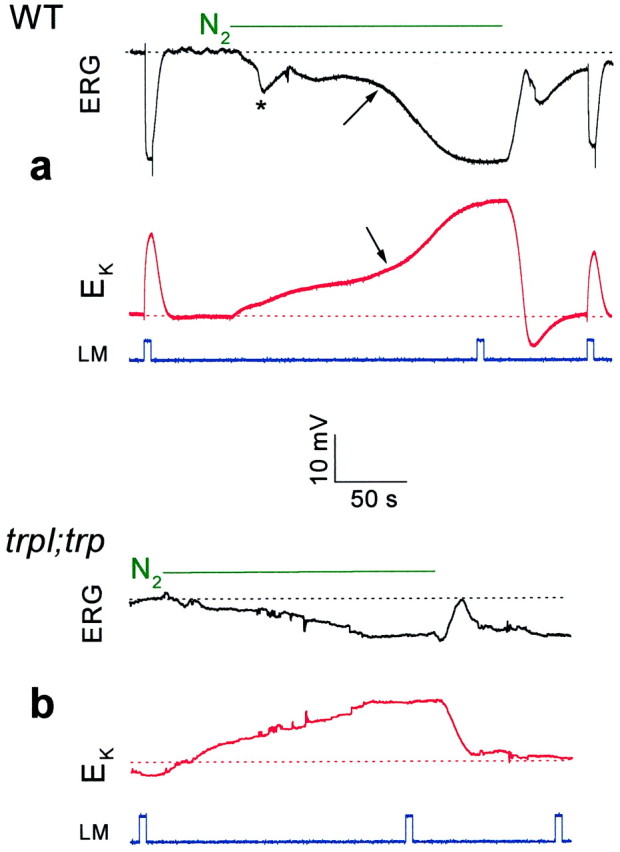Fig. 2.

Measurements of [K+]out in WT and thetrpl302;trp343mutant show that only the second and large phase of the response to anoxia arise from activation of TRP and TRPL channels.a, Extracellular voltage change (ERG,top panel, in black) and potentiometric measurements with a K+-selective microelectrode (EK, bottom panel, inred) in response to orange lights and anoxia, in wild-type (WT) Drosophila. On average, the maximal Δ[K+]out during anoxia was 7.26 ± 1.83 mm (n= 4), assuming that [K+]out in the dark is 4 mm (Sandler and Kirschfeld, 1991). The calibration applies for both the ERG and the potentiometric measurements with the K+-selective microelectrode.b, The experiments of a were repeated in the double mutanttrpl302;trp343. Note that there is no response to light, and the second phase of the response to anoxia is absent. On average, the maximal Δ[K+]out was 2.64 ± 0.54 mm (n = 4) during anoxia.
